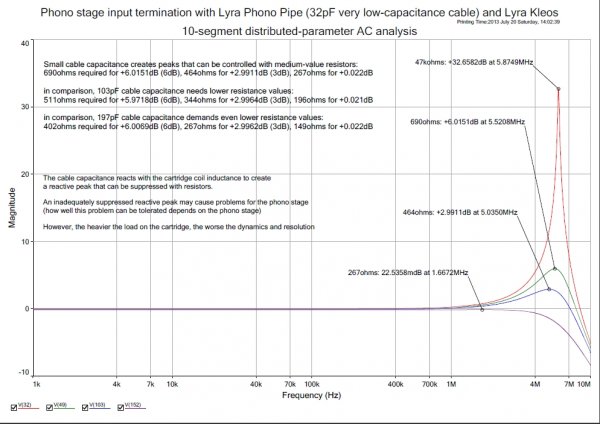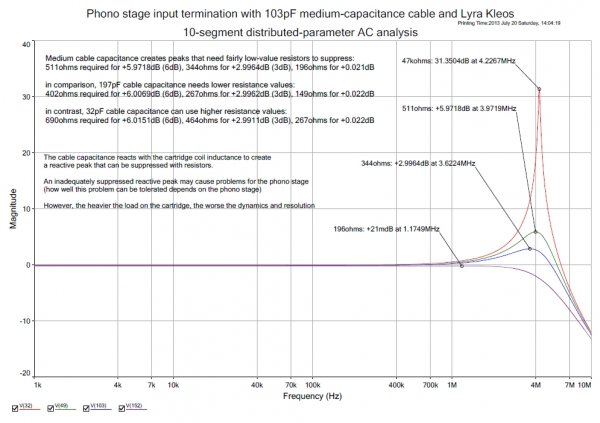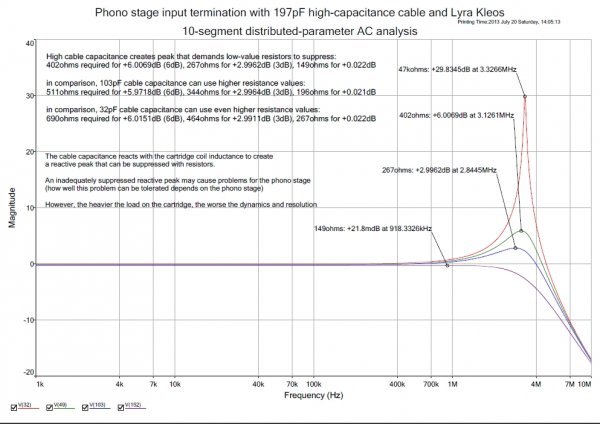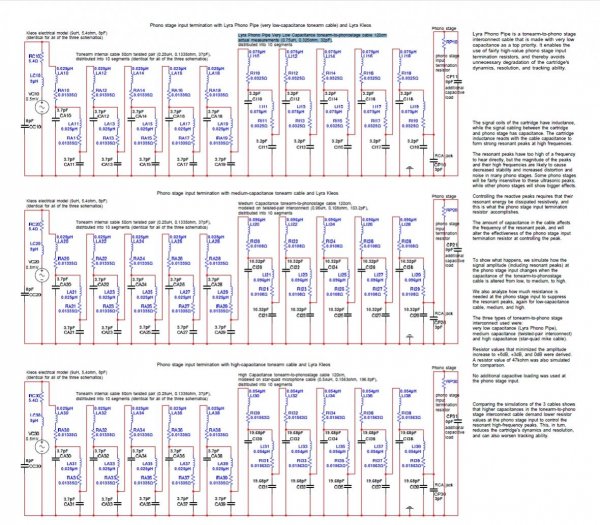I read last night the below noted discussion with great interest. It's a long post but worth the effort and I found it interesting.
It started me thinking about the amount of loading on my moving coil cartridges. Years ago I purchased my first MC Cart, a very nice Benz Micro Glider, medium output of 0.5 mV as I recall. At that time I inquired about loading here on Audiogon. I was convinced, via discussion, by another member, that 300 Ohms was the magic number, so I thought.
Time moved onward and my second MC Cart is currently a Lyra Delos, again medium output 0.6mV. Both carts had Boron cantilevers', 6 nines oxygen free copper coils and line contact diamond stylis. When I set up the Delos I did not change or even consider 'loading' changes. That was a grand mistake.....
Well, thanks to this specific thread I started to second guess myself . (you can do this when retired and more time is on your hands....)
My take from this recent thread is as follows. Load at 100 Ohms or at 47K Ohms with a quality MC cartridge. I opened up my Conrad Johnson EF1 Phono Stage this afternoon. Found it set at 500 Ohms loading. 100 Ohms is not an available setting. Damn...All these years I've been running the wrong loading, and on two carts, back to back... I don't recall why I set the loading at 500 Ohms. Faulty logic.
I reset the loading to 47K, buttoned things up and called the wife in for a listening session. Sure as heck both of us noticed the highs were crisper and more 'apparent' than in the recent past. Not a huge difference, but yes, a difference.. Hard lesson learned!
So, you smarter folks on this site might banter amongst yourselves, but in reality there are those of us, behind the curtains, reading and listening! I just wish I hadn't wasted all those years listening to the incorrect load setting!
Ending with a sincere thank you very much!!
Lou





